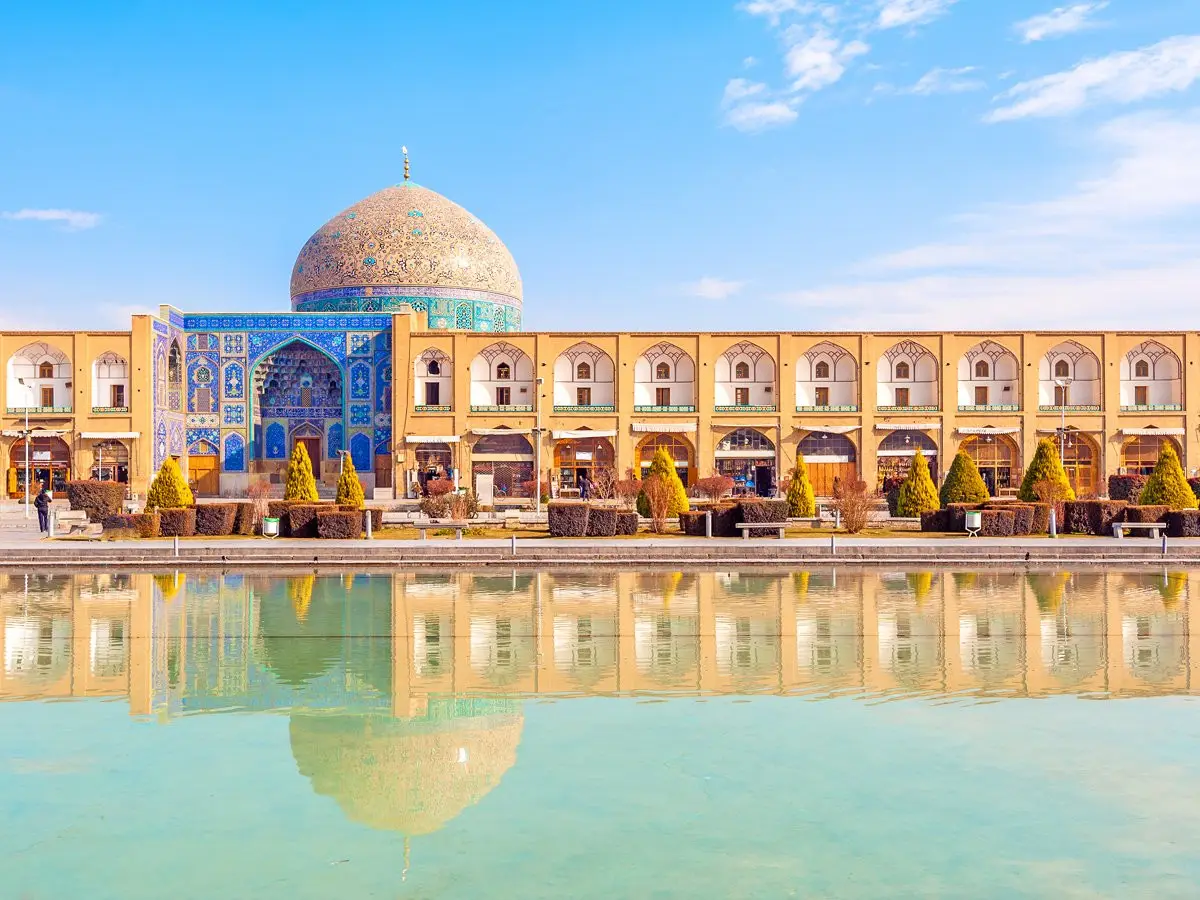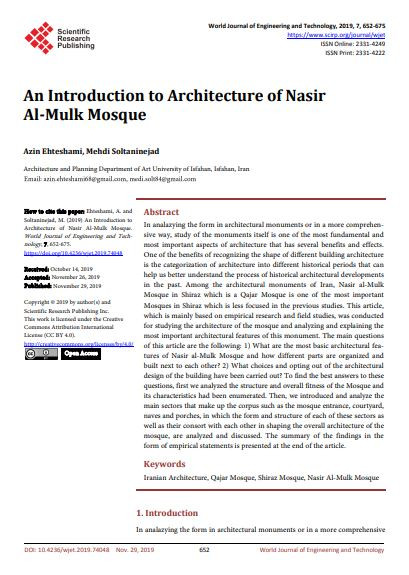

In analazying the form in architectural monuments or in a more comprehensive way, study of the monuments itself is one of the most fundamental and
most important aspects of architecture that has several benefits and effects.
One of the benefits of recognizing the shape of different building architecture
is the categorization of architecture into different historical periods that can
help us better understand the process of historical architectural developments
in the past. Among the architectural monuments of Iran, Nasir al-Mulk
Mosque in Shiraz which is a Qajar Mosque is one of the most important
Mosques in Shiraz which is less focused in the previous studies. This article,
which is mainly based on empirical research and field studies, was conducted
for studying the architecture of the mosque and analyzing and explaining the
most important architectural features of this monument. The main questions
of this article are the following: 1) What are the most basic architectural features of Nasir al-Mulk Mosque and how different parts are organized and
built next to each other? 2) What choices and opting out of the architectural
design of the building have been carried out? To find the best answers to these
questions, first we analyzed the structure and overall fitness of the Mosque and
its characteristics had been enumerated. Then, we introduced and analyze the
main sectors that make up the corpus such as the mosque entrance, courtyard,
naves and porches, in which the form and structure of each of these sectors as
well as their consort with each other in shaping the overall architecture of the
mosque, are analyzed and discussed. The summary of the findings in the
form of empirical statements is presented at the end of the article.
I agree to the terms outlined below:
You agree to upload and assign Mosqpedia Database the rights to use the content worldwide and in perpetuity across all current and future media platforms. Mosqpedia Database may edit, copy, adapt and translate your contribution.
The content will be distributed under the Creative Commons Attribution-Deed – Attribution-NonCommercial-NoDerivatives 4.0 International – Creative Commons
All data will be stored in line with data protection regulations.